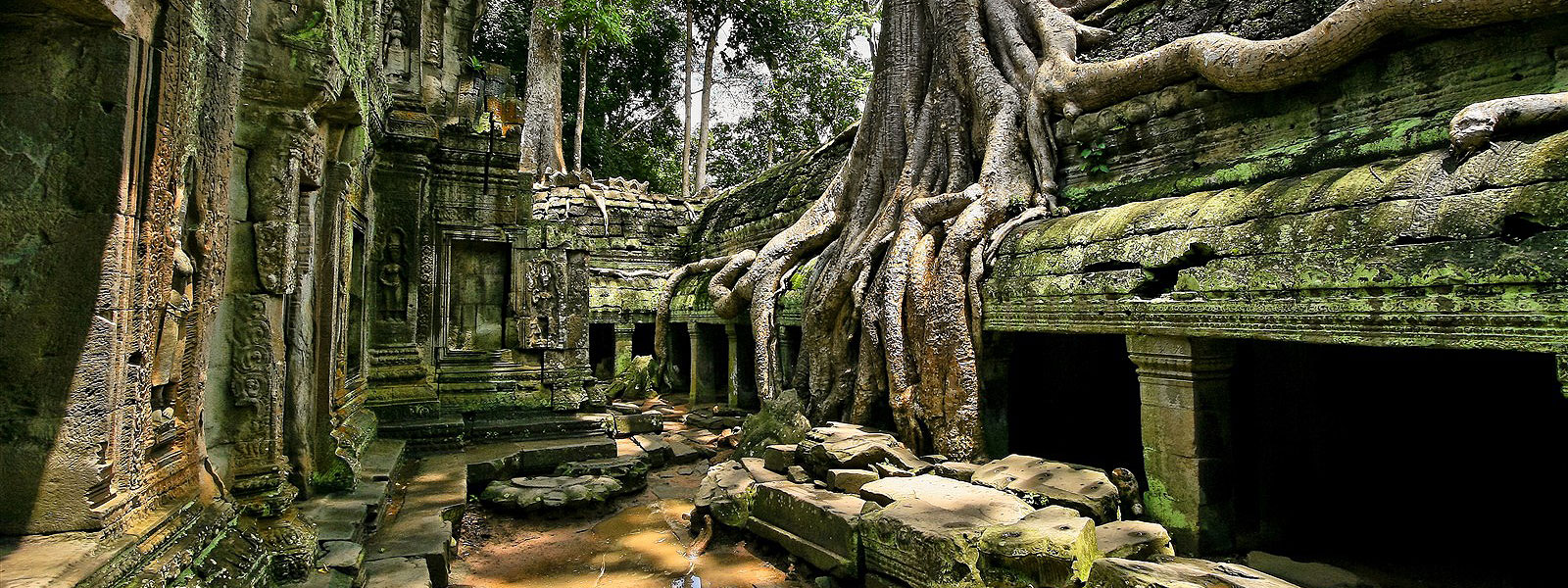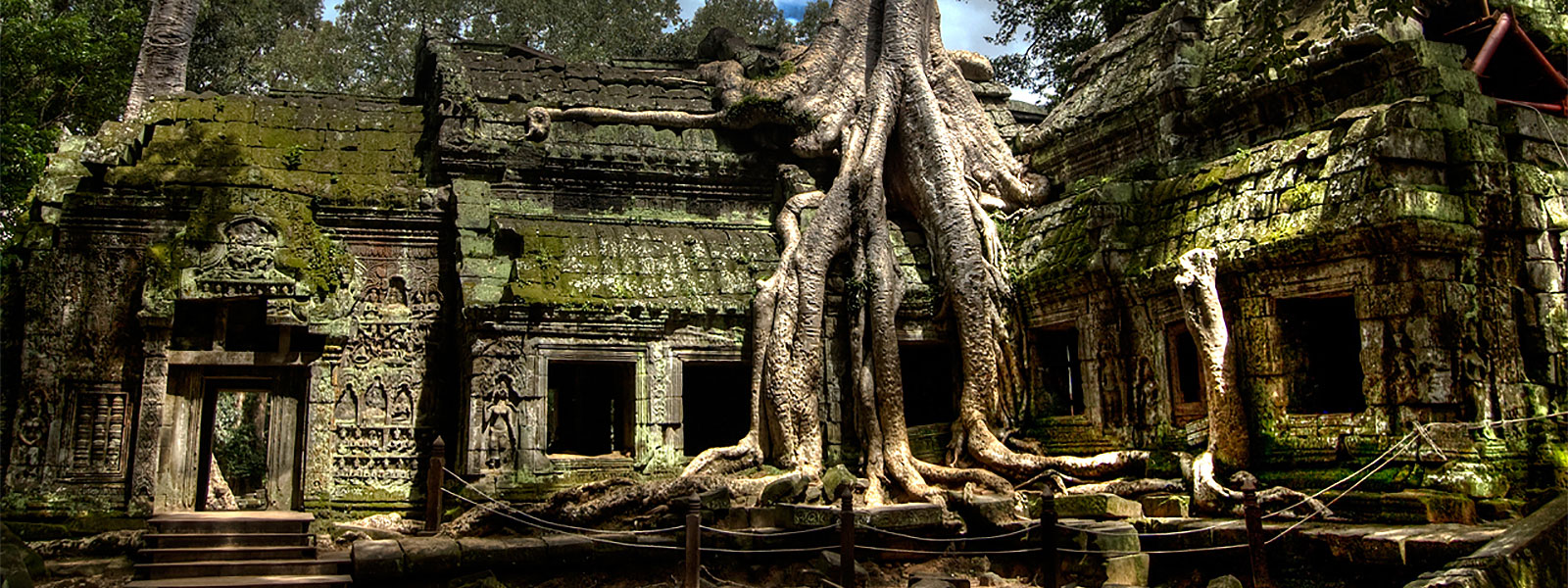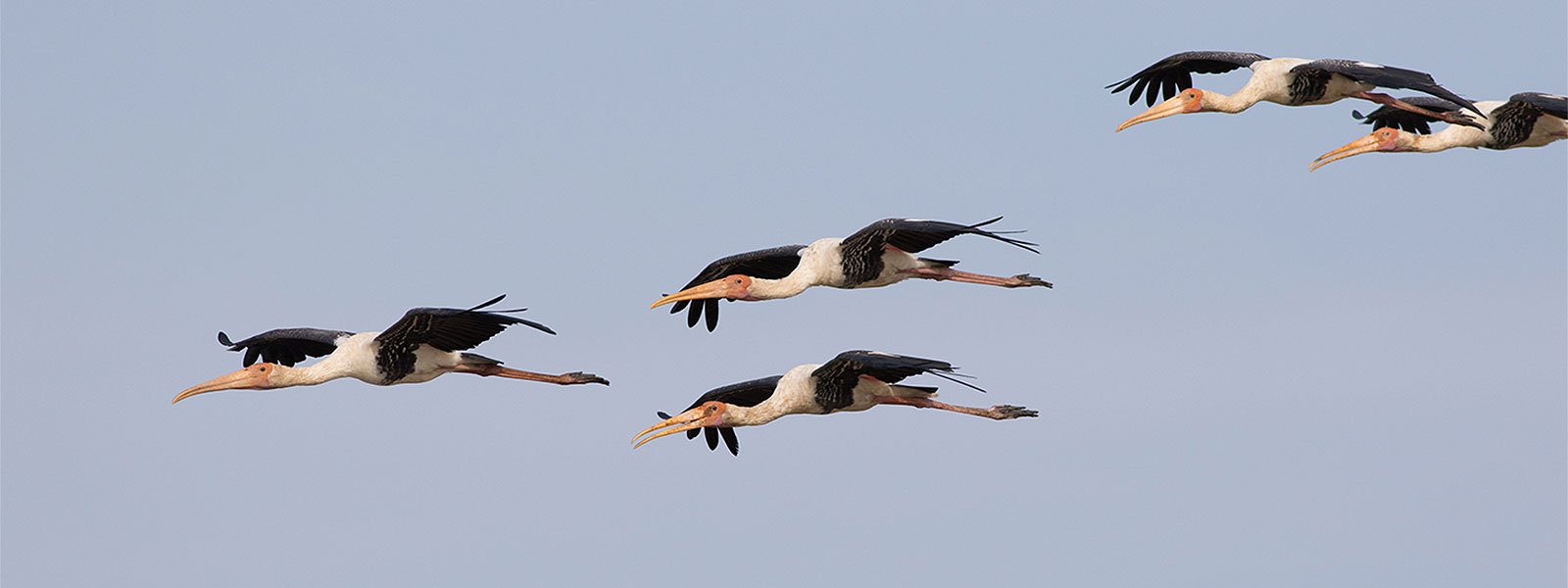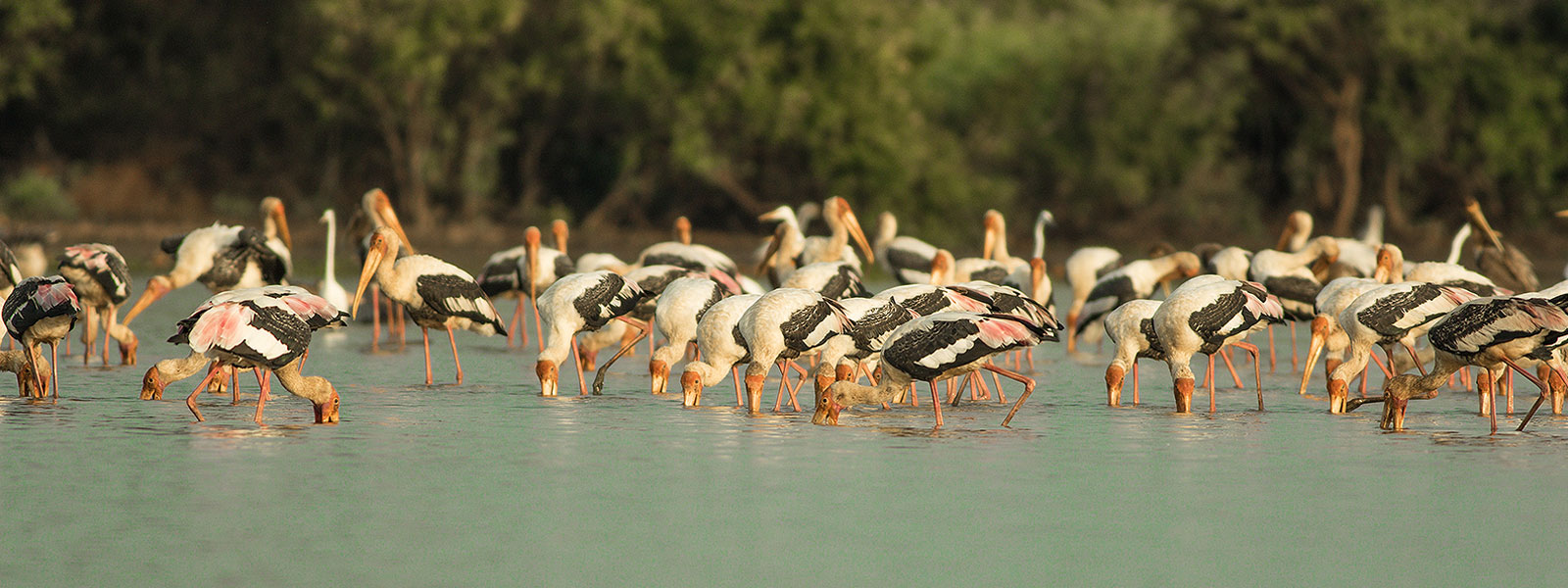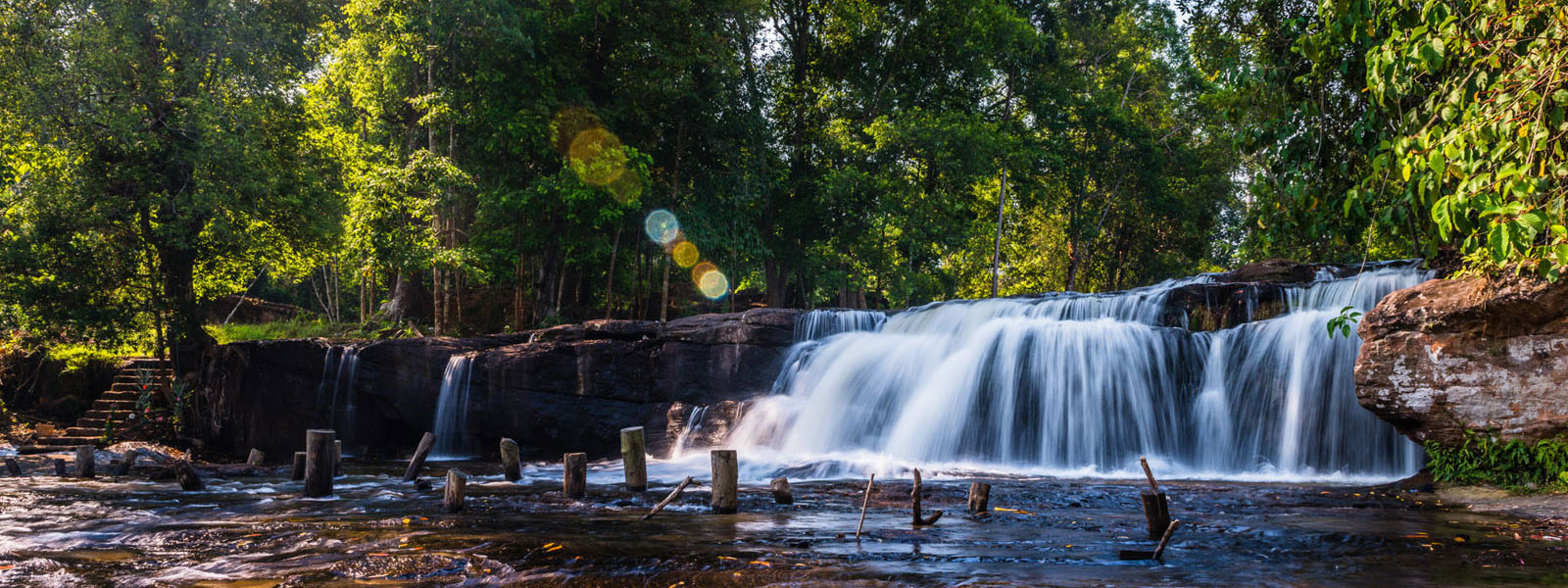DAY ONE
AM |
- Visit Roluos Group (Hariharalaya), the monuments of Roluos, which served as the capital of Indravarman I (reigned 877-89), built by the Khmers and mark the beginning of Khmer classical art.
- Visit Preah Ko, erected by Indravarman I in the late 9th century dedicated by the King to his ancestors in 880.
- Bakong, the largest and most interesting of the Roluos Group temple, with his active Buddhist monastery just to the North of the east entrance-Lolei, the four brick towers, a replica of the towers of Preah Ko.
|
| PM |
- Leave for tour of Angkor Wat and sunset at Bakheng Hill, built between the 9th and 14th centuries, the city of Angkor is one of the grandest monuments ever constructed and the largest religions building in the world, with a volume of stone equaling to Egyptian pyramid in Egypt.
- Phnom Bakheng, late 9th century was the state temple of the first capital of Angkor. Begin the ascent from the east side at the foot of the hill close to the road. The view from the top is magnificent, particularly of Angkor Wat to the South East and is the most popular spot for tourist at sunset. The three prominent hills of the area, Phnom Bakheng, Phnom Krom and Phnom Bok were all crowned with temples at the same period.
|
DAY TWO
AM |
- Leave for tour of Angkor Thom (comprising of the Bayon Temple, terrace of Leper King and the Elephant Terrace.) The city of Angkor Thom, founded by Jayavarman VII in the 12th century, was one of the largest of all Khmer cities and remained the capital until the 17th century.
- The Bayon or state temple of Jayavarman VII, is one of the most enigmatic and power religious constructions in the world. It is a unique mass of “faces tower”, which create a stone-mountain of ascending peaks. There were originally 49 towers of which 37 are still standing today. Most are carved with four faces on each cardinal point. The central tower has many more.
- The Elephant Terrace is at the heart of Angkor Thom and looks out overage Royal spare. It marks the entrance to the Royal Palace and was the focal point for Royal receptions. The carving of the elephants along its walls give its modern name.
- Terrace of Leper King, this massive terrace is named after the 15th century sculpture that was discovered on top of it. It probably dates back to the reign of Jayavarman VII and has been restored in a manner, which allows visitors to explore the earliest to most recent additions.
|
| PM | In the afternoon, visit to the archaeological site to continue the temple tour.
- Ta Prohm was built in the 12th century by Jayavarman VII as a royal monastery. It was dedicated to the king’s mother. This temple was chosen to be left in its natural state. Shrouded in jungle, the temple of Ta Prohm is ethereal in aspect and conjures up a romantic aura with gigantic roots and branches intimately intertwined with the stoned and probing walls to form a natural roof above the man made structure.
- Visit Takeo, Thommanon and Chau Say Tevoda
|
DAY THREE
AM | In the morning, continue to visit the temples:
- Prasat Kravan with unique brick sculptures.
- Pre Rup, the mountain temple.
- Ta Som, located at the eastern end of the Northern Baray at Angkor, was built at the end of the twelfth century during the reign of the powerful Buddhist King Jayavarman VII.
- Neak Pean, a foundation built in the middle of a pool and representing the paradisiacal Himalayan mountain-lake,
- East Mebon, guarded at its corner by stone figures of harnessed elephants, some of which are still in a reasonable state of preservation.
- Preah Khan, built in the 12th century and was one of Jayavarman VII’s largest projects dedicated to his father. Preah Khan was much more than a temple with over 1,000 teachers appearing to have been a Buddhist university as well as a considerable city.
|
| PM |
- Visit to the floating village of Chong Khneas, located 10 kilometers south of Siem Reap city.
- Visit villages and tour by traditional wooden boats along the Tonle Sap Lake, the great lake of Cambodia, one of the wonders of Asia.
|
DAY FOUR
AM |
- Drive to the Kulen Mountain range and walk 45 minutes through the forest to the top of the hill to reach Kbal Span, the thousand Linga River, discover the 10th – 12th century sculptures chiseled form the rocky riverbed, the Royal Bath and the waterfall.
- Continue to the enchanting temple of Banteay Srei, which is the “Citadel of Women” or “Citadel of Beauty” presumably referring to its size and the delicacy of its decoration. Unlike the major sites at Angkor, Banteay Srei was not a royal temple. It was built not by the kings, but by Brahmin Priests. Often described in terms as the “Jewel of Khmer Art”, Banteay Srei is a temple of great beauty, and compares with little else in Angkor.
|
DAY FIVE
AM | In the morning, you will continue your temple visit:
- Banteay Samre, built in the third quarter of the 12th century. It consists of a central temple with four wings preceded by a hall and accompanied by two libraries, the southern example remarkably well preserved. Two concentric walls enclose the ensemble.
- Srah Srang, “the pool of Ablutions” which was doubtless used for ritual bathing,
- Banteay Kdei, surrounded by 4 concentric walls.
|
| PM | Visit Art & Craft School, Les Artisan and Local Markets
- This school is a joint venture between the Cambodian and French governments to train young Cambodians to acquire skill in traditional sandstone carving, wood work and silk weaving. A showroom displays samples of their works which are for sales. Made to order pieces are also available.
|

